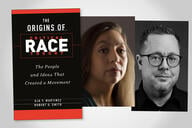You have /5 articles left.
Sign up for a free account or log in.
The University of California Press is building a new open-access publishing model around the idea that reviewers and researchers in the hard sciences can support new forms of scholarly communication by "paying it forward."
The university press last month introduced Collabra and Luminos, an open-access journal and monograph publisher, respectively. While Luminos is hoping to publish about 10 monographs this fall, Collabra is in beta testing and aims to accept submissions in a few weeks.
Neil B. Christensen, who joined the university press in 2013 after more than a decade in the commercial publishing sector, took the lead on developing Collabra. Now the director of digital development, Christensen said the journal was inspired by the idea that university presses should be more involved in furthering the open-access movement.
Collabra and Luminos also signal an effort to identify an open-access business model suitable for nonprofit institutions such as colleges and universities. Too many university presses, Christensen said, have tried to scale down and imitate the strategy of successful commercial publishers.
“Maybe what we’ve discovered is that’s not the way to do it?” Christensen said in an interview. “With Collabra, let’s try to work out a model that works for us. It may not work for other publishers, but, hey, that’s not our headache.”
To build a model for an economically feasible open-access journal, the university press settled on a complex algorithm that involves paying reviewers, subsidizing certain research and about $10,000 in seed money.
Collabra, like many journals that don’t rely on subscription fees, will charge authors a fee only once their work is ready to be published. Of the $875 article processing charge (or APC for short), $625 goes back to the press to cover its costs, while the remaining $250 is distributed to editors and reviewers based on their contributions, from overseeing projects to recommending an article for publication. As an added twist, editors and reviewers can then choose to keep the money themselves, donate it to a college’s open access fund or replenish the journal’s APC waiver fund, which researchers can apply to if they are unable to pay.
That sort of balancing act extends to disciplines the journal plans to cover. Although described as a megajournal, Collabra will see a more modest launch. In its first phase, the journal will pair research from faculty in life and biomedical sciences and ecological and environmental sciences -- disciplines where research grants are easier to come by -- with research from faculty in social and behavioral sciences. The second phase includes a similar pairing: computer science and medical and health sciences with the humanities.
“Ideally, we would like for Collabra to be a multidisciplinary journal, but we also knew it was a big commitment to launch in lots and lots of fields at once,” Christensen said. “One way to look at it is that it’s a wealth or value redistribution engine that we’re trying to create. For that to happen, there has to be some sort of ratio between beneficiaries and benefactors.”
The university press last fall surveyed 317 researchers, most of them located in the U.S. and the U.K., to pitch them on the concept behind the journal. A spokeswoman said the university press also conducted in-depth discussions with “well over 100... academics, researchers, librarians, funders and [open-access] colleagues” to help fine-tune that pitch.
Many of the researchers said (at least hypothetically) they would donate their share of the article processing charge. Based on the survey, 49 percent of respondents said they would keep the money, while a combined 51 percent would donate it either to their college or library or back to the waiver fund.
The survey pegged the article processing charge at between $600 and $700 -- a price point many respondents already deemed too high. When calculating the cost of launching and promoting the journal, however, the university press realized it would have to raise the fee, Christensen said.
“When we first started out, we were thinking ‘How low can we go?’” Christensen said. “We would have preferred to have done it for less, but it just didn’t seem feasible.” Besides, he added, $875 is still less than what publishers such as Elsevier ($500 to $5,000) and PLOS ($1,350) charge.
Since the first article submitted to Collabra may be written by a researcher unable to afford the $875 fee, the university press is seeding the waiver fund with about $10,000. Christensen said the university press has budgeted to publish about 70 articles this year, and that it is aiming for 15 percent of them to be sponsored by the fund. Beyond that, the fate of the fund is up to reviewers.
“If -- a year from now -- the waiver fund runs dry because the editorial team has decided not to put money into it or we can’t find funders, then it runs dry,” Christensen said. “We don’t have any plans for the press to use its own money to seed it again. The idea is that it should be able to carry itself.”
In addition to the challenges brought on by the model it has invented for itself, Collabra faces the same questions about legitimacy and prestige that any academic journal does in its infancy. Christensen said the university press’s goal is not to create a highly selective journal such as Nature, but that Collabra's editorial team hopefully grants the journal some measure of authority. “Of course we want to be a good journal that people find value in and find attractive as a publication venue, but it doesn’t have to be the most super-sexy journal,” he said. “Think about it as PLOS ONE. It’s a journal for the 70 percent rather than the 1 percent.”
While Collabra and Luminos were created to fit the University of California, Christensen said he would “love” for other university presses to borrow and alter its model. He also pledged to remain transparent about any tweaks the university press makes to the model post launch. “If there ever was a time for a university press to go into open access, this is the time,” he said.




